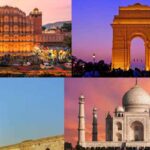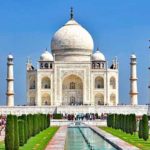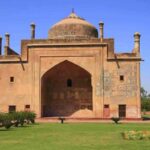Agra Travel Information, located in the northern state of Uttar Pradesh, India, is a city steeped in history and renowned for its magnificent architectural masterpiece, the Taj Mahal. Agra is a major tourist destination and attracts millions of visitors from around the world each year.
The Taj Mahal, a UNESCO World Heritage Site and one of the Seven Wonders of the World, is the crown jewel of Agra Tourism. This white marble mausoleum was built by Emperor Shah Jahan in the 17th century as a symbol of love for his beloved wife, Mumtaz Mahal. Its intricate carvings, delicate inlay work, and breathtaking symmetry make it an architectural marvel. Visitors are mesmerized by its beauty, especially during sunrise and sunset when the changing colors of the marble create a magical aura.
Apart from the Taj Mahal, Agra boasts other architectural gems like the Agra Fort and Fatehpur Sikri. The Agra Fort, another UNESCO World Heritage Site, served as the seat of power for the Mughal emperors and showcases a blend of Islamic and Hindu architectural styles. The fort’s massive walls, grand palaces, and stunning gardens offer a glimpse into the opulence of the Mughal era.
Fatehpur Sikri, located on the outskirts of Agra, is a deserted city built by Emperor Akbar. This historical site features well-preserved palaces, mosques, and courtyards, and provides insight into the grandeur of the Mughal empire Agra Monuments.
Agra is also known for its vibrant marketplaces and delectable cuisine. The bustling streets of Agra offer a variety of handicrafts, including marble inlay work, leather goods, and textiles, making it a paradise for shoppers. Food enthusiasts can indulge in Agra’s famous culinary delights, such as the succulent kebabs, spicy chaats, and mouthwatering sweets like petha and gajak.
Agra Tour Packages To enhance the overall experience, tourists can enjoy a boat ride on the Yamuna River, witness traditional dance and music performances, and explore the Mughal heritage through cultural shows and exhibitions.
In conclusion, Agra is a city that captures the essence of India’s rich history and architectural brilliance. With the Taj Mahal as its centerpiece, along with other notable attractions, vibrant markets, and delectable cuisine, Agra offers a complete package for tourists seeking a memorable and enriching experience.
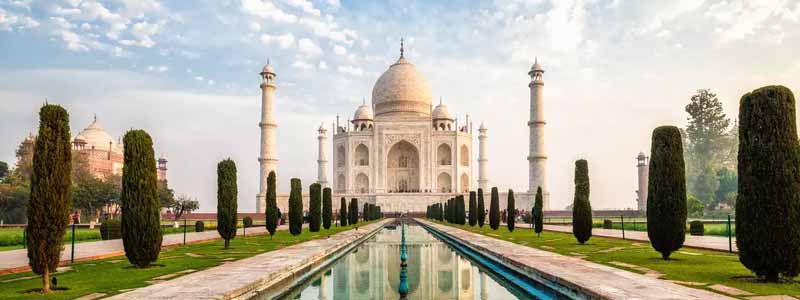
History of Agra
The history of Agra dates back to ancient times, making it one of the oldest cities in India. The city has witnessed the rise and fall of various empires and played a significant role in shaping the cultural and architectural landscape of the country.
Agra’s recorded history can be traced back to the Mahabharata, an ancient Indian epic, which mentions the city as ‘Agravana’ or ‘Agrawana.’ It is believed that Agra was founded by Raja Badal Singh in the 11th century. However, it gained prominence during the Mughal era, starting from the 16th century.
In 1526, Agra came under the rule of Emperor Babur, the founder of the Mughal Empire. He established Agra as the capital of his empire and began the construction of the Agra Fort. However, it was his grandson, Emperor Akbar, who transformed Agra into a grand city and made significant contributions to its architecture. Akbar built the majestic Fatehpur Sikri, a walled city near Agra, as his capital. Fatehpur Sikri showcases a fusion of Indian, Persian, and Islamic architectural styles.
The real glory of Agra began during the reign of Emperor Shah Jahan. He moved the capital from Agra to Delhi but retained Agra’s significance as a cultural and architectural center. Shah Jahan commissioned the construction of the iconic Taj Mahal as a mausoleum for his beloved wife, Mumtaz Mahal. Completed in 1653, the Taj Mahal stands as a testament to Mughal architecture and is a symbol of eternal love. Shah Jahan also built the impressive Agra Fort, which served as the main residence of the Mughal emperors.
The decline of the Mughal Empire led to Agra losing its status as a capital city. In the 18th century, Agra was captured by the Marathas, followed by the British East India Company in the early 19th century. Under British rule, Agra experienced a period of decline, with many of its architectural treasures falling into disrepair.
During the Indian independence movement in the early 20th century, Agra became an important center for political activities. The city witnessed protests, demonstrations, and rallies against British rule. In 1947, India gained independence from British colonial rule, and Agra became part of the newly formed Republic of India.
Since independence, Agra has undergone significant development and restoration efforts to preserve its historical and cultural heritage. The city has seen rapid growth in infrastructure, tourism, and industry. The Taj Mahal and other Mughal-era monuments have been recognized as UNESCO World Heritage Sites, attracting millions of tourists from around the world.
Today, Agra is a bustling city that blends the charm of its ancient history with modern amenities. It continues to be a significant cultural and architectural hub, attracting visitors who are fascinated by its rich heritage and iconic landmarks.
In conclusion, the history of Agra is intertwined with the rise and fall of empires, particularly the Mughal Empire. From its ancient origins to its glorious Mughal era, Agra has left an indelible mark on India’s history. The city’s architectural masterpieces, including the Taj Mahal, Agra Fort, and Fatehpur Sikri, serve as a testament to its past grandeur and continue to captivate people from all over the world.
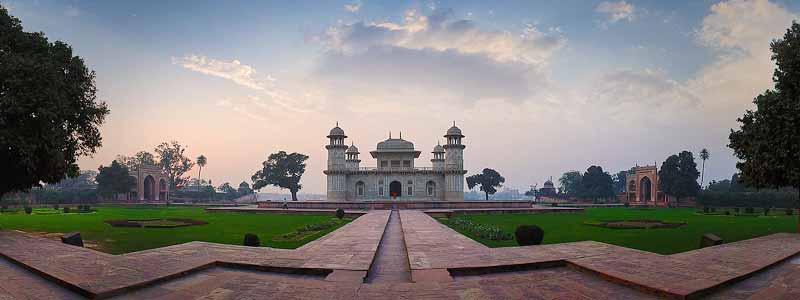
Places to Visit in Agra
Agra, India, offers a plethora of historical, cultural, and architectural wonders for visitors to explore. Here are some of the must-visit places in Agra:
Taj Mahal: Undoubtedly the most iconic and famous attraction in Agra, the Taj Mahal is a UNESCO World Heritage Site and one of the Seven Wonders of the World. This stunning marble mausoleum, built by Emperor Shah Jahan, is a testament to love and an architectural marvel.
Agra Fort: Also known as the Red Fort of Agra, this grand fort complex showcases a blend of Islamic and Hindu architectural styles. It served as the main residence of the Mughal emperors and offers breathtaking views of the Taj Mahal from its premises.
Fatehpur Sikri: Located near Agra, Fatehpur Sikri is a deserted city built by Emperor Akbar. This UNESCO World Heritage Site features well-preserved palaces, mosques, and courtyards, providing a glimpse into the Mughal era’s grandeur.
Itmad-ud-Daulah’s Tomb: Often referred to as the “Baby Taj,” this exquisite marble tomb is considered a precursor to the Taj Mahal. Itmad-ud-Daulah’s Tomb showcases intricate inlay work and is set amidst beautiful gardens.
Mehtab Bagh: Situated across the Yamuna River from the Taj Mahal, Mehtab Bagh offers a serene and picturesque view of the monument. It is a perfect spot to witness the Taj Mahal during sunrise or sunset and capture breathtaking photographs.
Jama Masjid: Agra’s largest mosque, Jama Masjid, was built by Emperor Shah Jahan. It is an architectural marvel with intricate carvings, red sandstone façade, and a large courtyard that can accommodate thousands of worshippers.
Akbar’s Tomb, Sikandra: Located in Sikandra, on the outskirts of Agra, this grand mausoleum is the final resting place of Emperor Akbar. The tomb showcases a blend of architectural styles and beautiful gardens.
Mariam’s Tomb: This tomb is dedicated to Mariam-uz-Zamani, the wife of Emperor Akbar and the mother of Emperor Jahangir. It is known for its impressive architecture and peaceful surroundings.
Guru Ka Taal: A historic gurudwara located in Agra, Guru Ka Taal holds religious significance for Sikhs. It features a stunning water tank and beautiful architecture.
Mughal Heritage Walk: Take a guided heritage walk through the old city of Agra to explore its hidden gems, bustling bazaars, and local lifestyle. This walk offers insights into the rich Mughal history and culture of the city.
These are just a few of the remarkable places to visit in Agra. The city’s rich history, architectural marvels, and cultural heritage make it a truly captivating destination for travelers from around the world.
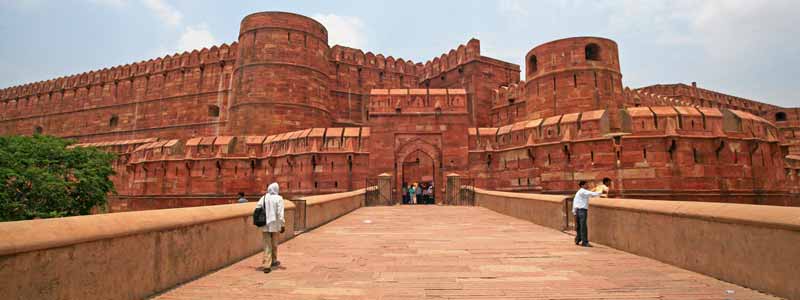
Famous Shopping Markets in Agra
Agra, known for its rich cultural heritage, also offers vibrant shopping markets where visitors can indulge in traditional handicrafts, textiles, jewelry, and more. Here are some of the famous shopping markets in Agra:
Kinari Bazaar: Located near the Jama Masjid, Kinari Bazaar is a bustling market known for its wide range of traditional Indian clothing and textiles. Visitors can find intricately embroidered fabrics, sarees, lehengas, and dress materials. The market is also famous for its colorful bangles, artificial jewelry, and decorative items.
Sadar Bazaar: Situated near the Agra Cantt railway station, Sadar Bazaar is a popular shopping destination for tourists. It offers a variety of items, including leather goods, footwear, marble handicrafts, clothing, and souvenirs. The market is also known for its delicious street food, making it a delightful place to explore.
Shah Market: Located near the Taj Mahal, Shah Market is a bustling marketplace known for its marble and stone handicrafts. Visitors can find miniature replicas of the Taj Mahal, intricate inlay work, decorative plates, and other marble souvenirs. The market also offers leather goods, textiles, and jewelry.
Raja Ki Mandi Market: Situated near Raja Ki Mandi railway station, this market is a favorite among locals and tourists alike. It offers a wide range of products, including clothing, footwear, handicrafts, jewelry, and home decor items. Visitors can also explore the market’s vibrant food stalls and savor delicious local snacks.
Subhash Bazaar: Located near the Agra Fort, Subhash Bazaar is known for its unique collection of handicrafts, including marble inlay work, leather items, carpets, and brassware. Visitors can find beautiful souvenirs and decorative pieces reflecting the rich craftsmanship of the region.
Shilpgram: Situated near the Taj Mahal, Shilpgram is a government-run craft village that showcases the rich traditional crafts of Agra and other parts of India. It offers a wide range of handicrafts, including wood carvings, marble sculptures, pottery, textiles, and paintings. Shilpgram also hosts cultural events and demonstrations, providing visitors with a deeper understanding of Indian art and crafts.
Tajganj Market: Located near the Taj Mahal, Tajganj Market is a vibrant shopping area known for its marble products, including tabletops, decorative pieces, and jewelry. Visitors can also find traditional Indian clothing, handicrafts, and souvenirs in this bustling market.
While exploring these markets, visitors should remember to bargain for the best prices and exercise caution while purchasing precious items. Agra’s shopping markets offer a unique opportunity to experience the local culture, interact with artisans, and take home beautiful souvenirs that reflect the city’s rich heritage.
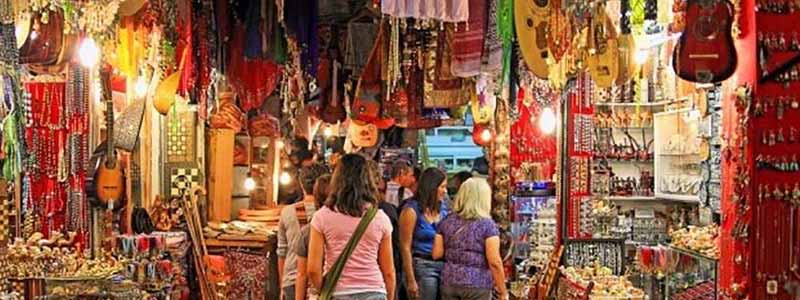
Festivals of Agra
Agra, like the rest of India, celebrates a variety of festivals throughout the year. These festivals are an integral part of the city’s vibrant culture and provide an opportunity to witness colorful traditions, music, dance, and religious fervor. Here are some of the major festivals celebrated in Agra:
Taj Mahotsav: Held annually in February, the Taj Mahotsav is a 10-day extravaganza that showcases the rich cultural heritage of Agra. The festival features classical music and dance performances, folk dances, handicraft exhibitions, and food stalls offering traditional cuisine from different regions of India. The event takes place near the Taj Mahal and attracts both domestic and international tourists.
Holi: Celebrated in March, Holi is a vibrant and joyous festival known as the “Festival of Colors.” People come together to smear each other with colorful powders, dance to traditional music, and indulge in festive sweets. The celebration of Holi in Agra includes special events and performances, with locals and tourists joining in the festivities with great enthusiasm.
Eid-ul-Fitr: This festival marks the end of Ramadan, the Islamic holy month of fasting. Eid-ul-Fitr is celebrated with prayers, feasting, and sharing of sweets and gifts. In Agra, the Jama Masjid becomes the focal point of the festivities, where people gather for prayers and celebrate the occasion with family and friends.
Diwali: Known as the “Festival of Lights,” Diwali is one of the most widely celebrated festivals in Agra and across India. It signifies the victory of light over darkness and good over evil. During Diwali, homes are decorated with colorful lights, candles, and intricate rangoli patterns. Fireworks light up the sky, and families come together to exchange sweets and gifts. Agra’s markets, including Sadar Bazaar and Kinari Bazaar, are adorned with festive decorations, and the city’s monuments are illuminated, creating a mesmerizing atmosphere.
Janmashtami: Janmashtami celebrates the birth of Lord Krishna, a revered Hindu deity. Devotees fast, sing devotional songs, and participate in religious processions. In Agra, the celebration includes performances of the traditional Raslila dance-drama, depicting episodes from Lord Krishna’s life.
Christmas: Agra has a significant Christian population, and Christmas is celebrated with great enthusiasm. Churches are beautifully decorated, and midnight masses are held to commemorate the birth of Jesus Christ. The city’s Christian community comes together for carol singing, feasting, and exchanging gifts.
These are just a few of the festivals celebrated in Agra. Each festival brings its own unique charm, adding vibrancy and liveliness to the city’s cultural tapestry. Visitors to Agra during these festivals can witness the city’s rich traditions, partake in joyful celebrations, and experience the warmth and hospitality of its people.
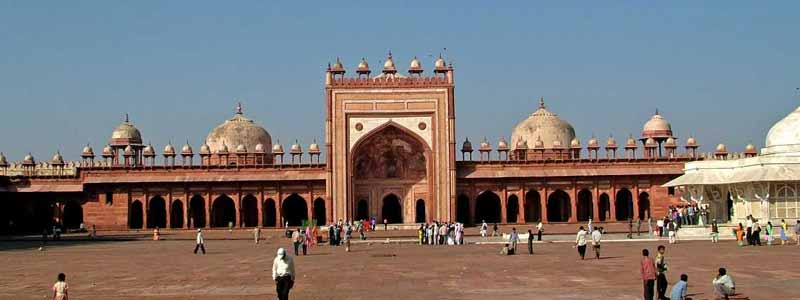
Best Time to Visit Agra
The best time to visit Agra is during the winter months, from October to March. Agra experiences extreme temperatures, with scorching summers and chilly winters, so the winter season offers pleasant weather for exploring the city’s attractions comfortably.
Here’s a breakdown of the seasons in Agra:
Winter (October to March): Winter is the peak tourist season in Agra. During this time, the weather is cool and pleasant, with temperatures ranging from 8°C (46°F) to 24°C (75°F). It is ideal for visiting the iconic Taj Mahal, Agra Fort, and other historical sites without the discomfort of extreme heat. The mornings and evenings can be chilly, so carrying a light jacket or shawl is advisable.
Summer (April to June): Agra experiences scorching summers, with temperatures soaring as high as 45°C (113°F) in May and June. The heat can be intense and make outdoor sightseeing uncomfortable, particularly during the daytime. If you plan to visit Agra during this time, it’s recommended to carry sunscreen, a hat, and stay hydrated.
Monsoon (July to September): Agra experiences moderate rainfall during the monsoon season. While the showers provide relief from the summer heat, the rain can disrupt outdoor activities and sightseeing. The humidity levels are also high during this time. However, if you enjoy the lush greenery and want to experience the city with fewer crowds, visiting Agra during the monsoon season can be an option.
Considering the weather conditions and tourist influx, the winter season from October to March is the most favorable time to visit Agra. The pleasant weather allows you to explore the city comfortably and enjoy the outdoor attractions without being hindered by extreme temperatures. However, it’s worth noting that the winter months, especially November to February, tend to be the busiest period for tourism in Agra, so expect larger crowds at popular sites like the Taj Mahal.

How to Reach Agra
Agra, located in the northern state of Uttar Pradesh, India, is well-connected to major cities by air, rail, and road. Here are the different ways to reach Agra:
By Air: The nearest airport to Agra is the Agra Airport, also known as Pandit Deen Dayal Upadhyay Airport. However, it has limited connectivity and mainly operates domestic flights. The nearest major international airport is the Indira Gandhi International Airport in New Delhi, which is about 230 kilometers (143 miles) away from Agra. From there, you can take a domestic flight or continue your journey by road or train.
By Train: Agra is well-connected to major cities in India by train. The city has four railway stations, with Agra Cantonment (AGC) being the main and most well-connected station. Agra is served by several trains, including the high-speed Gatimaan Express and other express trains, which provide easy access from cities like Delhi, Jaipur, Mumbai, Kolkata, and Chennai. The journey from Delhi to Agra by train takes around 2 to 3 hours, depending on the train type.
By Road: Agra is well-connected to major cities and tourist destinations in North India by road. The city is located on the National Highway 19 (NH19), which connects it to Delhi and other cities. Agra is approximately a 3-4 hour drive from Delhi, depending on the traffic conditions. You can hire a private taxi, use ride-sharing services, or take a state-run bus to reach Agra. Several private tour operators also offer day trips from Delhi to Agra.
By Bus: Agra is well-connected to neighboring cities and towns in Uttar Pradesh and other states through a network of state-run and private buses. Uttar Pradesh State Road Transport Corporation (UPSRTC) operates buses from major cities like Delhi, Jaipur, Lucknow, and Kanpur to Agra. You can choose between regular buses and luxury coaches based on your preference and budget.
Once you reach Agra, you can hire local transportation options such as auto-rickshaws, cycle-rickshaws, taxis, or app-based cab services to explore the city and visit its attractions.
It’s advisable to check the availability of flights, train schedules, and bus timings in advance, especially during peak tourist seasons, and make necessary reservations to ensure a smooth and convenient journey to Agra.

